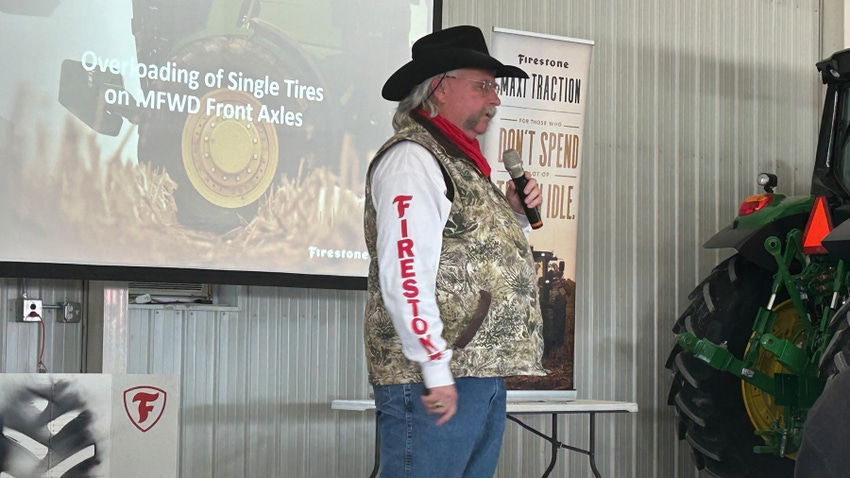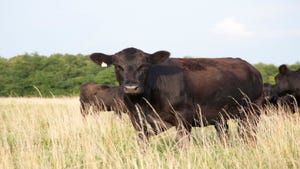
It takes fuel to plant and harvest a crop. Farmers do all they can to make sure their equipment is in optimal condition to save as much fuel as they can. But there’s one thing that’s often overlooked, and that’s ensuring tires are set to the right pressure for the field conditions.
Dusty Hininger, manager of agricultural sales training for Firestone AG, says balancing the tire and setting it to the optimal pressure can save fuel, no matter the brand of tire you have.
Hininger was one of the speakers at the March 6 Fuel Savings Field Clinic at Don’s Tire in Abilene, Kan. The clinic provided four tips before you head to the field this spring:
1. Weigh your tractor. Hininger says the first step, and the most important step that many farmers may skip, is weighing the tractor so that you can accurately set the pressure and make sure that tires are balanced correctly. “You cannot do that by guessing what the weight is on that tractor,” he says.
Tire dealers should have scales to weigh tractors before mounting and balancing tires. Account for your specific tractor, and how the weight will be split when it’s in use. Also, be sure to weigh the tractor with full fluids.
2. Select the right pressure for the load. Tires are pressure vessels that support the load, says Greg Jones, global field engineering manager for Firestone. Overinflation decreases the length of the tire’s footprint and alters its shape, leading to reduced traction, flotation, wear performance and ride quality.
Under-pressured tires can sustain structural damage and aren’t efficient in the field either. Jones explained that when properly inflated, tractor and equipment tires get more traction and reduce slippage, and ultimately, they cover more acres for less wasted fuel.
3. Consider central tire inflation systems. These systems allow on-the-fly inflation adjustments depending on if the tractor is working in the field, or driving down the road between fields. These systems are factory options on some tractors, and there are also aftermarket options for farmers.
Hininger reminds farmers that moving equipment between fields and running that equipment in the field requires different optimal tire pressures. The right tire pressure will save soil compaction, and if you do the math, he says, if you’re reducing soil compaction by 4% on a field that averages 200-bushel corn per acre, that’s a savings of 8 bushels per acre. At today’s prices, that’s $35 per acre in corn, and if you farm 1,000 acres, that’s protecting $35,000 in corn yield, he adds.
4. Use the right tire gauge. Digital low-pressure air gauges that are made for tractor tires are worth the money, Hininger says. Also, he advises farmers to replace those air gauges regularly because they do lose accuracy. And even though it may be inconvenient to reach the valve stems on mounted tractor tires, and farmers may be in a rush, Hininger also advises farmers to check tire pressure weekly to get the optimal use out of their expensive tires.
The right pounds per square inch can mean a more efficient tractor in the field, and even if the savings is 2% of your fuel bill, Hininger adds, that’s a lot of money in a season.
About the Author(s)
You May Also Like






